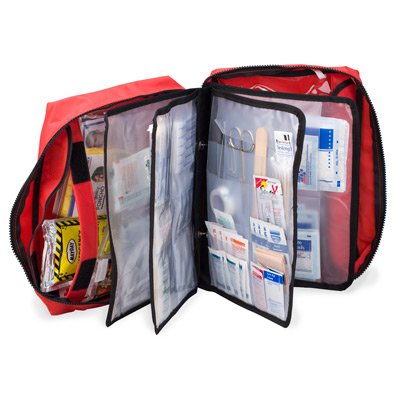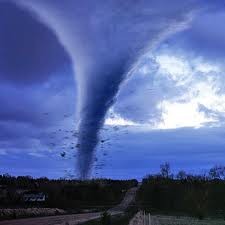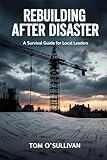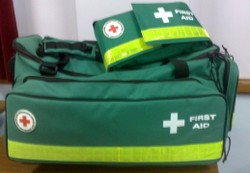Many people like you and me believe it is extremely important we plan for an emergency. The thing is dealing with the critical aspects of developing our own disaster plan, we know in the back of our minds, we should prepare. It simply is not something we like to spend much time thinking about, let alone following a template to make a list. After all, we find ourselves constantly advised and warned of some impending danger or another. Regardless where we live, work or visit, there is always some sort of severe weather or disaster we fear striking without advanced warning.

Emergency Preparedness Disaster Recovery Plan
by teddletonmr
Be prepared, ready to respond, recover and mitigate emergencies with a disaster recovery plan.
Disaster recovery plan
Be it a flood, earthquake, tsunami, wildfire, thunderstorm with tornado, hurricane, or record-breaking winter storm or volcano eruption. The unsettling fact of the matter, Mother Nature has a nasty reputation for changing our world and lives in ways we do not want to consider. Making it easy to understand why even though a bit hesitant, we know as part of our emergency preparedness disaster recovery plan we must be prepared.
 |
4 aspects of emergency preparedness plan
1. Prepare for any emergency
2. Respond to the emergency
3. Recover from the emergency
4. Mitigate and prevent an emergency
Emergency first Aid Kit
 |
| First Aid Emergency Kit Only $25.00 |
 |
1. Be prepared when emergencies strike
Depending on which area of the country we live, work or travel. Each region Influences what types of man-made or natural disasters we need to plan on dealing with. After all, folks living in the Midwest are not about to experience a hurricane. Thunderstorms with tornados and earthquake yes, suffering the devastating effects and the aftermath of a hurricane like Katrina no.
However, everyone needs to be prepared to deal with medical emergencies. Basic first aid lifesaving techniques are something every member of the family should have a basic understanding. Check with your Family Doctor. Or Red Cross for classes in your area. Everyone should learn basic first aid, CPR and emergency response do’s and don’ts.
2. Respond to emergencies
Each city, county, small town and state has developed its own emergency preparedness disaster response plan. We should familiarize ourselves with all aspects of that plan. Paying strict attention to where we should seek medical attention and where emergency shelters are located.
Understand, first responders, are assigned the task of determining what agencies, how and where they need to respond to any given fire, accident, or disaster.
Emergency preparedness kit for your car
 |
| AAA 65-Piece Winter Severe Weather Travel Kit Only $129.99 |
3. Recover from a disaster
Property damage and loss is devastating to say the least. It is difficult to maintain a positive attitude when dealing with damages to our home, and property loss. One of the first things homeowners and renters alike, find ourselves faced with, what insurance coverage we have, and what it will cover. Remember things will get better in time.
Be prepared for dealing with heartless insurance adjusters. They will be far more concerned with what the law forces them to do, rather your loss and hardships. It is the law and the insurance company will not negotiate the price they pay to repair or replace your loss, everything will be about how much depreciation and actual cost to rebuild or replace differ.
Oh, by the way you should be prepared to wait a minimum of four to six weeks before the insurance adjuster will get around to processing your insurance claim. You see the insurance companies only have a few adjusters, in the aftermath of a disaster that affects a community. It will take time to get things repaired or replaced.
In the event, the disaster takes one or more of your loved-one’s life, what will the survivors face. Your spouse, kids and pets, protect and provide for in a will.
4. Mitigate and prevent damage and loss.
Lessoning the total impact of a disaster before it strikes, drastically influencing the rest of our lives, requires a bit of pre-planning for a disaster. Living in a flood plain for instance, eventually you are going to have to deal with a flooding problem. Earthquake fault an earthquake, tornado alley a tornado, living around an active volcano, an eruption will happen eventually.
These sorts of disasters come in cycles, when they talk about the five year, twenty year or one-hundred year flood. That means it really floods that often, and as severe or worse as predicted.
Contacting your local fire department, city and state police, and Red Cross, for specific information on how best prepare your home, family and property in the case a disaster strikes. Will make a difference in how you and yours recover from a disaster.
 |
Disaster Recovery Plan Should Include
1. Steps that prepare us for dealing with emergencies, who to contact when separated, where to meet outside the home and put together an emergency preparedness kit.
2. Define how to respond to emergencies, for instance meeting beside the mailbox or street corner in case of a fire, Calling a close family friend or family member that everyone knows to contact in an emergency. This person will need to know everything about you, birthday, special medical conditions, in short anything that identifies you.
3. Be prepared to deal with the recovery phase after a disaster. Keep copies of important documents in a safe place other than your home or business. Insurance policies, Wills, copies of utility bills, birth certificates and arrangements for food and shelter in the event your home is a total loss.
4. Mitigate and prevent as much as you can before a disaster strikes. Depending on where you live, you may need to take steps that will protect your home from flooding, earthquake damage, or damage caused by high wind. Remember an ounce of prevention, is worth a pound of cure. It is far better to be overly prepared, than react after a disaster strikes to think about developing your own disaster plan dealing with all the pressing emergencies.
Closing thoughts
Emergency preparedness is the last thing we want to think about, I understand that feeling. However, you have spent a bit of your time reading this article, which in my mind means you want to take the appropriate actions we discussed here.
Congratulations, now get to it, put together your contact list, your grab and go kit, and please take a Red Cross first aid class or at least a refresher course. What do you have to lose?
Thanks for stopping by to read this article. Please do take a moment and ask any question you like in the comment section below.
Be prepared, stay safe as you can, and make it a great day. Mike
 |
Red Cross Disaster Plan Guide
4 Person Grab and Go Disaster kit
 |
| Ready America 72 Hour Deluxe Emergency Kit, 4-Person 3-Da... Only $133.46 |
 |
more of Mike's tips and reviews
You might also like
First Aid: Would you Know What to Do?A medical emergency could happen at any moment. The question is whether you h...
Would You Recognize the Symptoms of Hypothermia in Time to Sav...If you've ever dithered, teeth chattering with the cold, you've been in the o...









 Apple Watch the Best Talking Watch Bargainon 01/16/2023
Apple Watch the Best Talking Watch Bargainon 01/16/2023
 In-depth review of a Bushcraft Backpacking Survival hatcheton 12/05/2014
In-depth review of a Bushcraft Backpacking Survival hatcheton 12/05/2014
 Winterizing windows – Easy and inexpensive DIY projecton 11/17/2014
Winterizing windows – Easy and inexpensive DIY projecton 11/17/2014
 Growing cucumbers on a trellis is fun and easyon 08/05/2014
Growing cucumbers on a trellis is fun and easyon 08/05/2014



Your comments and questions adding to the discussion are welcome
You are welcome Katie, i hope you never need to employ your disaster recovery plan, However it is far better to have a good up to date plan and not need it rather, well you know.
Thanks for your thoughts, be well and I hope you never need to implement your disaster plan.
Peace be with you and yours. Mike
Given the heightened awareness of this years record breaking tornadoes or so it seems, I'm getting prepared for the worst, just in case. We had terrible winds and tornadoes in our area this past friday. Time to reevaluate the safety provisions. You can never be to prepared when kids are in the picture. Great emergency preparedness disaster recovery plan Mike, Thanks